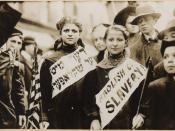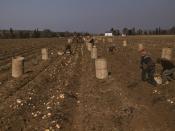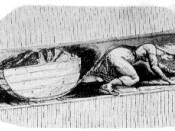Child labour, which can be defined as any work done by a minor for monetary or other reward, declined markedly in Britain during the 19th and 20th centuries. The 1851 census recorded that more than a quarter of all children aged between ten and fourteen were employed in a variety of occupations (Block 2, p.89), but by 1973 full-time education was compulsory until the age of sixteen (Block 2, p.112), showing that the focus of childrenÃÂs lives had shifted from work to school. Today, children below the age of fourteen rarely work outside of the home, and stringent regulations apply to any child employment in Britain (CAB). The causes of its decline remain unclear as many reason have been offered, but the influence and effectiveness of each is an area for debate. The numerous possible contributory factors will be discussed within the relevant historical context.
Child labour was seen as a normal and expected aspect of the lives of, particularly, working-class or peasant children leading up to the 19th century.
Before the dawn of the Industrial Revolution towards the end of the 18th century, most people lived in the country, where children would have worked in agriculture, animal husbandry, and domestic work. With the advent of industrialised manufacturing businesses, and the associated increased demand for coal mining, many people moved to the towns to find work. It was at this time that a change in the quality of child labour occurred, with many children, as young as five years old, being employed in factories, mills and mines. Hours were long, the conditions often unhealthy, and the work usually demanding and detrimental to the childÃÂs development, both physical and moral (Block 2, p.86, extract from Leeds Intelligencer).
Historians have drawn differing conclusions as to the forces behind child labour at the...


